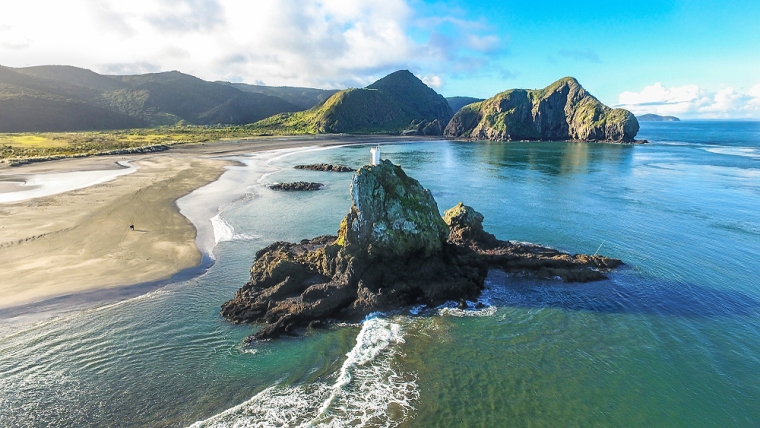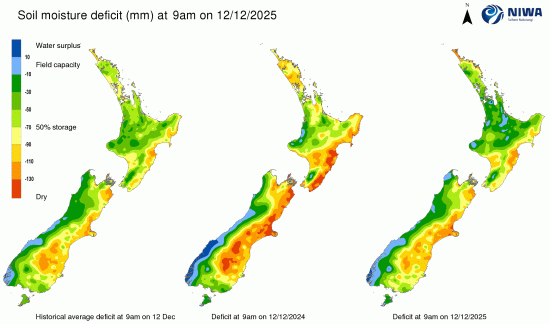
Here's our summary of key economic events overnight that affect New Zealand with news the impacts of tropical cyclone Alfred are major and lingering longer than anticipated. It is a huge weather event for Australia.
But first up today, the February non-farm payrolls report showed the US economy added 151,000 jobs in February, slightly below the +160,000 expected. The January data was downwardly revised to +125,000 from the original +143,000. Their jobless rate ticked up to 4.1%. We should note that virtually none of the DOGE cuts are reflected in this data. Their participation rate fell.
The actual unadjusted rise in February from January was +891,000 in this payroll survey data, but that was less than seasonal factors would have usually delivered and less than the +1,065,000 gain in the same period in 2024. Including the unincorporated self employed, the total number of employed people was 162.5 mln, and that was less than in January. The shift to company payrolls is still happening but slower, and the total number of people actually employed actually dropped. Average weekly earnings were up +3.4% from a year ago and that was their least in more than a year. (Over the past 12 months, that rise has averaged +3.7%, so a notable tailing off in February.)
The US Fed boss Powell talked about the outlook for the US economy today, and commented that they see no reason to be cutting their policy rates any time soon.
In Canada, their February labour force data wasn't that flash either. Full-time employment fell -20,000 while part-time employment rose +21,000. But their average hourly wages rose +4.0%. Their participation rate fell too. No-one expects this labour force data to improve while the tariff war hostilities build in 2025.
Across the Pacific, China said its exports rose +2.3% in February, but that was notably less than th +5% rise expected. China's imports fell -8.4% when a +1% rise was expected. That means their merchandise trade balance rose to +US$170 bln, well above the January +US$142 bln and spiked by reactions to US trade and tariff policies. Their data shows a -US$1.1 bln February deficit in their trade with New Zealand. With Australia it was a -US$8.4 bln deficit.
China is expected to report its February inflation rate over the weekend, and most observers see it falling into deflation on a CPI basis, and deeper into producer price deflation.
Despite all the US, China and global trade woes, the New York Fed's tracking of global supply chain pressures is reporting a pretty sanguine situation. Of course, that will undoubtedly change going forward.
The US president has threatened Canada again, this time with 'reciprocal' tariffs on dairy and timber. If he goes ahead, it will almost certainly backfire on Americans. Canada is already the US dairy industry's second largest export market and that market will almost certainly reject US goods. And Canadian timber is well-embedded into US house building. Trump wants US national forests harvested to replace Canadian supplies but that will take time to build volumes, and come at higher prices.
And we should probably note that vaccine hesitancy, especially in Texas, is delivering a measles outbreak that has professionals worried. Not the least because the Kennedy/Trump response is to downplay it and suggest quack remedies. It is a small outbreak at the moment, but could spread quickly, and is not the sort of thing you should get in a first world country.
In Australia, plans to call an April federal election are reportedly shelved, partly because of the expected physical and financial cleanup after tropical cyclone Alfred. There are now apparently more than ¼ mln people without electricity this morning, and the storm is lingering longer than expected. The new expected election date will be sometime in May. There will be a new Budget update there in three weeks, on Tuesday, March 25, 2025. And we should note there is a state election in Western Australia today. The incumbent Labor government is almost certain to be re-elected.
Today the UST 10yr yield is now at 4.32%, up +3 bps from yesterday but up +9 bps for the week. The key 2-10 yield curve is still at +32 bps. Their 1-5 curve inversion is now a negative -1 bp. And their 3 mth-10yr curve now has turned -6 bps inverted. The Australian 10 year bond yield starts today at 4.46% and down -4 bps from yesterday. The China 10 year bond rate is now at 1.84% and up an unusually sharp +7 bps. The NZ Government 10 year bond rate is now at 4.64%, down -6 bps but up +14 bps from a week ago.
Wall Street has opened its Friday trading with the S&P500 up +0.7% and heading for a -3.2% drop for the week. Overnight European markets were mixed again with London unchanged but Frankfurt down -1.8%. Yesterday Tokyo closed down -2.2% to be a net -2.0% lower for the week. Hong Kong was down -0.6% yesterday but up +4.7% for the week, and Shanghai slipped -0.3% on the day to be up +1.3% for the week. Singapore slipped -0.1%. The ASX200 ended its Friday session down another -1.8% for a weekly drop of -2.7%. But the NZX50 only ended down -0.2% for a weekly -1.6% retreat.
The Fear & Greed Index ends the week having slipped into the 'extreme fear' zone, and unchanged from last week.
The price of gold will start today at just over US$2908/oz and down -US$9 from yesterday.
Oil prices are up +US$1 to just on US$67/bbl in the US and the international Brent price is just over US$70.50/bbl. These levels are -US$3 lower for the week.
The Kiwi dollar is now at 57 USc and back down -50 bps from yesterday. A week ago it was at 56 USc, so a +100 bps rise since then. Against the Aussie however we are up +10 bps at 90.6 AUc. Against the euro we are down -50 bps at 52.6 euro cents. That all means our TWI-5 starts today just over 66.3, and down -40 bps from yesterday, burt only a +10 bps rise in the past week.
The bitcoin price started today at US$87,508 and down a net +3.1% from this time yesterday. That is up +4.6% from a week ago. Volatility over the past 24 hours has been high at +/- 3.1%.
Daily exchange rates
Select chart tabs
The easiest place to stay up with event risk is by following our Economic Calendar here ».
9 Comments
It is a small outbreak at the moment, but could spread quickly, and is not the sort of thing you should get in a first world country.
Too many NZ kids are not properly vaxed either, here its a cultural thing. Its not a Trump or Texas thing, happening right here where we all know this is a good vax to have. The podium of truth made many wary of vax, make something compulsory and many will rebel.
-
Specific Data Points:
- MMR1 coverage was 92.8% for Māori children born in 2017, but declined to 78.4% for those born in 2020.
- Māori children have an MMR dose 1 coverage of 54.9%, compared with 79.4% in non-Māori/non-Pacific/non-Asian children.
-
Factors Contributing to Low Rates:
- COVID-19 pandemic may have contributed to a decline in timely childhood immunisation for Māori.
- Systemic and attitudinal barriers that Māori face when accessing timely immunisation.
Agree the controversy that flared up over the covid vaccines has permeated the entire question of vaccines globally and obviously negatively so. Next week though I will get a whooping cough, and some time after that the usual flu jab but I have no intention of a fifth covid.
The shingles is worth paying for
Shingles vaccination is also free over 65
I will get the shingles jabs this year as they are free and everyone keeps bugging me about it but I have only had the flu jab once followed by a bad cold soon after which put me off them. If you feel you may be getting a cold go and get some sunshine if you can. Eat plenty of cream, cheese, butter, eggs and steak. Higher cholesterol levels assist the skin to make vitamin D. Cholesterol is essential for the production of vitamin D. Vitamin D is an essential vitamin for the functioning of the immune system.
Cod liver oil. Essential vit’s A & D. Those of us who got the daily dose of Lane’s Emulsion are not have likely to ever forget that but today, it is one of the cheaper supplements and easy enough in capsules.
"More than 6.1 million couples registered for marriage last year, down from 7.68 million a year earlier, figures from the Ministry of Civil Affairs showed.
"Unprecedented! Even in 2020, due to Covid-2019, marriages only decreased by 12.2%," said Yi Fuxian, a demographer at the University of Wisconsin-Madison.
He noted that the number of marriages in China last year was less than half of the 13.47 million in 2013.
If this trend continues, "the Chinese government's political and economic ambitions will be ruined by its demographic Achilles' heel," he added."
https://www.reuters.com/world/china/chinese-marriages-slid-by-fifth-202…
Toyota launched its cheapest EV in China and it crashed the server starting at just $15,000
https://electrek.co/2025/03/06/toyotas-cheapest-ev-china-crashes-server…


We welcome your comments below. If you are not already registered, please register to comment
Remember we welcome robust, respectful and insightful debate. We don't welcome abusive or defamatory comments and will de-register those repeatedly making such comments. Our current comment policy is here.